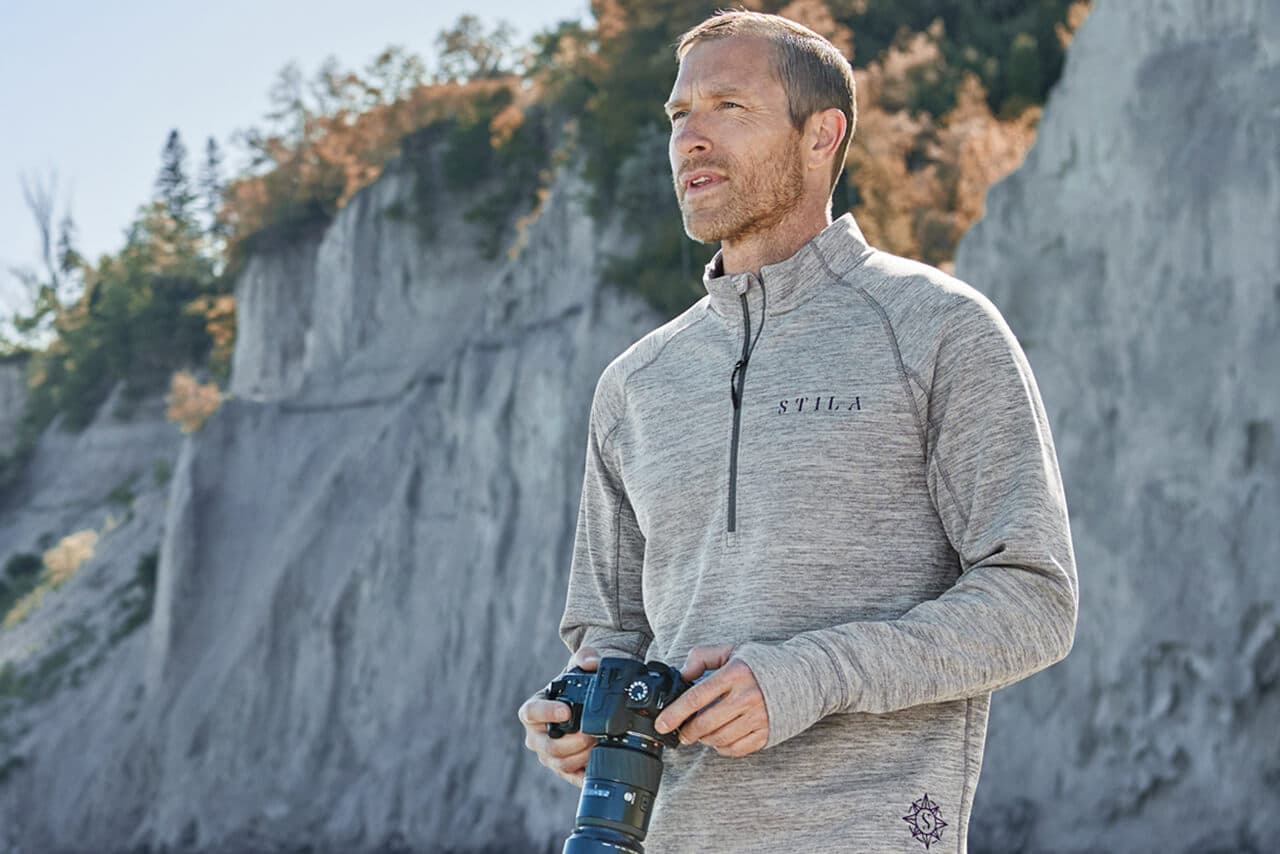Branded Clothing and the Rise of Recycled Fabric Use in Fashion
The Importance of Sustainable Clothing: How It Influences the Environment and Your Closet
Sustainable apparel is significantly acknowledged for its critical duty in lessening the ecological impact of the quick apparel industry. By concentrating on environment-friendly products and moral production approaches, it deals with pushing ecological worries. This change not only benefits the earth however also affects consumer options, bring about a more thoughtful technique to wardrobe monitoring. Understanding these dynamics increases crucial questions about fashion's future and individual responsibility fit it.
The Environmental Footprint of Rapid Fashion

Advantages of Lasting Materials
Lasting products use considerable advantages, particularly via eco-friendly textile selections that decrease ecological damage. These materials also show resilience and longevity, reducing the demand for frequent replacements. As an outcome, they add to a much more lasting style industry and advertise liable consumer behavior.
Eco-Friendly Material Options
While the garment industry has long been associated with rapid patterns and environmental injury, the increase of environmentally friendly material options offers a transformative chance. Sustainable materials such as organic cotton, hemp, and Tencel have gained appeal because of their reduced environmental influence. These textiles are typically created without hazardous chemicals and require much less water, decreasing their carbon impact - Branded Clothing. In addition, several environment-friendly textiles are biodegradable, contributing to a round economic climate by reducing waste. Picking lasting materials not just sustains eco liable practices yet also promotes healthier communities. As customers come to be a lot more familiar with their buying power, the need for environmentally friendly textiles urges brands to innovate and embrace even more sustainable production techniques, eventually benefiting the earth and future generations
Toughness and Long Life Advantages
Many consumers are progressively identifying the resilience and durability advantages of lasting products in their apparel selections. Unlike conventional materials, lasting products such as organic cotton, hemp, and recycled polyester are engineered to endure deterioration, leading to garments that last longer. This decreased frequency of substitute not just conserves consumers money over time yet also diminishes waste produced by fast fashion. Furthermore, sustainable clothes typically uses environmentally friendly production methods that enhance fabric toughness, adding to a decrease in the general carbon footprint. By purchasing sturdy clothing, consumers can cultivate a more sustainable closet while taking pleasure in top quality pieces that preserve their aesthetic and capability gradually. As a result, resilience and long life stand as key benefits of picking sustainable products.
Minimizing Waste With Lasting Practices
Minimizing waste in the style industry can be achieved through cutting-edge practices such as upcycling and repurposing products. Furthermore, taking on minimal closet approaches encourages consumers to focus on high quality over amount, eventually decreasing clothing usage. With each other, these techniques add considerably to a much more lasting clothing design.
Upcycling and Repurposing Materials
Upcycling and repurposing products have become cutting-edge techniques in the apparel industry, changing discarded textiles right into useful brand-new items. This approach not only minimizes waste but likewise urges imagination and originality in clothing style. By taking old garments and products, developers can produce special items that reflect personal style while minimizing the need for brand-new sources. Additionally, upcycling often requires much less power and water compared to standard production procedures, substantially decreasing the ecological impact of style. As consumers become a lot more familiar with sustainability, the appeal of upcycled clothing proceeds to climb, promoting a circular economic climate. Ultimately, these methods add to a more lasting future, where fashion prioritizes environmental wellness over quick production and consumption.

Minimalist Wardrobe Strategies
As people significantly seek to reduce their ecological effect, adopting minimalist closet techniques has actually obtained grip as an efficient method to sustainable style. These strategies stress top quality over amount, encouraging consumers to curate a smaller sized collection of versatile, sturdy garments. By concentrating on ageless pieces that can be mixed and matched, individuals can reduce the regularity of purchases and ultimately lower waste.Additionally, minimalism advertises conscious usage, urging shoppers to reflect on the environmental and moral ramifications of their choices. This approach not just promotes a more lasting way of life yet additionally simplifies daily decision-making regarding clothing. As people welcome minimalist concepts, they add to a fashion society that values sustainability and responsible consumerism, eventually bring about a much more eco-conscious culture.
The Function of Moral Labor in Sustainable Style
While numerous customers are progressively familiar with the ecological repercussions of their clothing options, the significance of honest labor practices in sustainable style can not be neglected. Ethical labor includes fair earnings, secure working problems, and regard for workers' legal rights, creating the backbone of responsible style manufacturing. Brand names that focus on honest labor not just uplift communities but additionally set a criterion for responsibility in the industry.Moreover, the combination of moral practices fosters transparency, making it possible for consumers to make enlightened selections concerning their purchases. This practice contrasts sharply with rapid style's exploitative labor models, which usually focus on earnings over people. By supporting firms devoted to honest labor, consumers add to a system that values human dignity together with ecological sustainability. Ethical labor is not merely an add-on; it is essential to the more comprehensive mission of sustainable fashion, making certain that the quest for eco-friendliness does not come at the cost of human rights.
The Influence of Lasting Apparel on Carbon Emissions
Sustainable clothing has the possible to greatly reduce carbon emissions related to the fashion market. Visit This Link Traditional garment manufacturing adds especially to greenhouse gas exhausts, primarily because of energy-intensive production processes and making use of non-renewable sources. On the other hand, lasting style focuses on environmentally friendly products, such as natural cotton or recycled fibers, which frequently require less power to produce.Moreover, lasting brand names tend to take on a lot more efficient manufacturing techniques, reducing waste and reducing overall discharges. By see it here focusing on toughness and timeless layout, lasting apparel motivates customers to get less often, more reducing the carbon impact connected with overconsumption.Additionally, many lasting brand names are committed to transparency in their supply chains, making it possible for consumers to make informed selections that line up with their values. Eventually, moving towards lasting clothes can lead to a substantial reduction in carbon exhausts, adding to a much healthier earth and a more lasting future for the apparel industry.
Sustaining Regional Economic Climates With Lasting Options
The shift toward lasting clothes not just addresses ecological concerns however also considerably benefits regional economic climates. By selecting lasting fashion, consumers usually sustain tiny businesses and local craftsmens, boosting area strength. These ventures typically operate a smaller sized scale, prioritizing craftsmanship and honest practices over mass production.Investing in locally made lasting apparel cultivates work creation and promotes economic growth within communities. As customers come to be extra knowledgeable about the ecological influence of their acquisitions, they significantly choose items that show their values. This demand encourages neighborhood suppliers to embrace sustainable practices, adding to a round economy.Moreover, supporting local companies minimizes transportation exhausts, aligning with eco-conscious customer behavior. The interconnectedness of lasting clothes and neighborhood economic situations emphasizes the essential duty that specific options play in promoting both ecological and economic health. By cultivating these regional connections, areas can flourish while additionally working in the direction of a much more sustainable future.
Changing Your Closet: Tips for a Lasting Wardrobe
As people seek to lower their environmental impact, changing a storage room into a lasting closet becomes a vital action. One efficient strategy is to examine existing garments, maintaining only items that are worn routinely and that align with sustainability objectives. Focusing on quality over quantity is essential; buying resilient pieces from eco-friendly brands can considerably decrease waste.Additionally, integrating pre-owned products can rejuvenate a closet while lessening ecological damages. Organizing garments swaps with pals or donating extra things can further promote sustainability.When shopping, individuals must seek materials that are natural, recycled, or biodegradable, and avoid rapid style retailers - Branded Clothing. Exercising conscious intake by attentively taking into consideration each acquisition can add to a more lasting lifestyle. By executing these ideas, one can develop a closet that shows personal style while supporting environmental stewardship
Frequently Asked Questions
How Can I Identify Sustainable Clothing Brands?
To identify lasting apparel brand names, one need to research materials used, look for qualifications like Fair Profession, and check out the brand's transparency about their production procedures, labor techniques, and ecological effect, guaranteeing honest and green methods are prioritized.
What Are the Costs Connected With Lasting Style?
The costs connected with lasting style can differ significantly. Higher manufacturing costs, moral sourcing, and green materials typically result in increased market prices, which might discourage some consumers while appealing to eco our website mindful shoppers.
Can Lasting Garments Be Fashionable and Fashionable?
Sustainable clothing can undoubtedly be stylish and fashionable. Designers significantly focus on innovative products and moral production methods, verifying that fashion and sustainability can exist side-by-side. Customers now have varied choices that blend aesthetic appeals with environmental awareness.
Just How Does Washing Clothing Affect Their Sustainability?
Cleaning clothes greatly effects sustainability by consuming water and power, adding to pollution, and triggering microplastic release. Constant cleaning can degrade materials, shortening their life expectancy and raising the requirement for replacements, ultimately aggravating ecological concerns.
What Is the Lifespan of Sustainable Garments Compared to Fast Fashion?
The life expectancy of sustainable clothing normally exceeds that of quick style things, often lasting numerous years because of high quality materials and craftsmanship. On the other hand, quick style garments might weaken promptly, demanding more frequent substitutes. Sustainable clothes is significantly acknowledged for its crucial role in minimizing the ecological effect of the quick fashion industry. While many consumers are significantly mindful of the ecological repercussions of their garments options, the relevance of moral labor methods in sustainable fashion can not be neglected. Branded Clothing. Sustainable apparel has the possible to greatly reduce carbon exhausts connected with the style sector. In comparison, sustainable style focuses on environment-friendly materials, such as natural cotton or recycled fibers, which frequently require much less energy to produce.Moreover, lasting brand names tend to take on extra effective manufacturing methods, decreasing waste and decreasing total discharges. By prioritizing resilience and timeless layout, lasting clothes encourages customers to buy less regularly, additional decreasing the carbon footprint connected with overconsumption.Additionally, several sustainable brand names are dedicated to openness in their supply chains, enabling consumers to make educated choices that line up with their worths